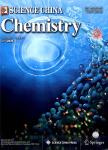Quantum chemical study on insertion and abstraction reaction of dichlorocarbene with methyl alcohol and methyl mercaptan
Quantum chemical study on insertion and abstraction reaction of dichlorocarbene with methyl alcohol and methyl mercaptan作者机构:College of Life Science and ChemistryTianshui Normal UniversityTianshui 741001China Key Laboratory of Polymer Materials of Gansu ProvinceCollege of Chemistry and Chemical EngineeringNorthwest Normal UniversityLanzhou 730070China
出 版 物:《Science China Chemistry》 (中国科学(化学英文版))
年 卷 期:2009年第52卷第3期
页 面:304-312页
核心收录:
学科分类:081704[工学-应用化学] 07[理学] 08[工学] 0817[工学-化学工程与技术] 070303[理学-有机化学] 0703[理学-化学]
基 金:Supported by the National Natural Science Foundation of China (Grant No. 20335030) Foundation of Education Committee of Gansu Province (Grant No. 0708-11)
主 题:carbene alcohol DFT NBO AIM insertion reaction abstraction reaction
摘 要:The insertion and abstraction reaction mechanisms of singlet and triplet CCl2 with CH3MH (M=O, S) have been studied by using the DFT, NBO and AIM methods. The geometries of reactions, the transition state and products were completely optimized by B3LYP/6–311G(d, p). All the energy of the species was obtained at the CCSD(T)/6–311G(d, p) level. The calculated results indicated that the major pathways of the reaction were obtained on the singlet potential energy surface. The singlet CCl2 can not only trigger the insertion reaction with C-H and M-H in four pathways, by which the products P1 [CH3OCHCl2, reaction I(1)], P3[Cl2HCCH2OH, reaction I(2)], P5[CH3SCHCl2, reaction II(1)] and P7[Cl2HCCH2SH, reaction II(2)] are produced respectively, but also abstract M-H, resulting P4 [CH2O+CH2Cl2, reaction I(3)] and P8[CH2S+CH2Cl2, reaction II(3)]. In addition, the important geometries in domain pathways have been studied by AIM and NBO theories.



